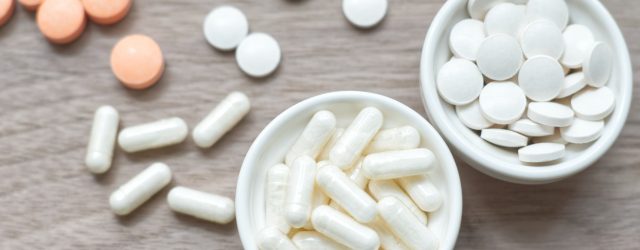
Abstract
This article provides a comparative analysis of the regulatory frameworks for food supplements in the European Union (EU) and Japan, two of the world’s most significant markets. The aim is to highlight the fundamental differences in their approaches to governance, product classification, ingredient management, labelling, and pre-market requirements. We explore the EU’s dual-layered system, which combines harmonized directives with national legislation, leading to regional variations. This is contrasted with Japan’s centralized, uniform framework, where products are classified based on their functional claims (1). The analysis underscores critical distinctions in pre-market procedures, from the EU’s varied notification systems to Japan’s tiered approach of notification and formal approval.
Introduction
The global food supplement market is a dynamic and expanding sector, driven by increasing consumer awareness of health and wellness. For businesses aiming to operate internationally, a deep understanding of the regulatory environment in key markets is not just advantageous—it is essential for compliance and commercial success. Among the most developed and stringent markets are the European Union and Japan. While both regions prioritize consumer safety and product integrity, they have adopted fundamentally different regulatory philosophies and structures.
The European Union, a unique political and economic union of 27 Member States, operates on a principle of semi-harmonization. EU-wide legislation sets a common foundation, but individual Member States retain the authority to implement specific national rules, creating a complex and sometimes fragmented regulatory tapestry. Conversely, Japan employs a highly centralized and uniform national system managed by its Consumer Affairs Agency (CAA) (1, 8). This system is characterized by a unique classification of products based on the types of health claims they bear, which dictates the path to market (8).
This article will dissect and compare these two frameworks. We will examine their core structural differences, approaches to product definition and classification, rules governing ingredients and claims, and the pre-market obligations incumbent on food business operators. By juxtaposing the EU’s dual-layered model with Japan’s claim-centric system, we aim to provide a clear and comprehensive guide for regulatory professionals, manufacturers, and importers navigating the path to market in these two vital regions.
Main Contents
Regulatory framework and governance
The most fundamental divergence between the EU and Japanese systems lies in their governance structure.
In the European Union, the framework is dual-layered. At the top, EU-wide legislation, such as the Food Supplements Directive (2002/46/EC) (3), establishes common definitions and rules applicable across all 27 Member States. This directive provides a harmonized definition for food supplements: “foodstuffs the purpose of which is to supplement the normal diet and which are concentrated sources of nutrients or other substances with a nutritional or physiological effect…marketed in dose form”. However, this harmonization is incomplete. Member States are responsible for setting specific national requirements, such as maximum levels for vitamins and minerals, and may have unique rules for other substances like botanicals (3). This creates a mosaic of regulations where a product compliant in one country may require adjustments to be sold in another. Furthermore, while EU law governs the 27 Member States, countries like Norway and Switzerland often align with its provisions to access the single market, whereas post-Brexit UK now retains much of the EU law but as a separate ‘third country’.
In stark contrast, Japan operates a centralized, single-layer national framework overseen by the CAA. The standards are uniform and apply equally across the entire nation, eliminating the regional variability seen in the EU. Japan does not have a separate legal category for “food supplements”. Instead, products that might be considered supplements in other regions fall into several classifications under the broader category of Foods, primarily distinguished by the “health claims” they are permitted to make (8). This claim-based classification is the cornerstone of the Japanese system and dictates the regulatory pathway for each product.
(Important point to consider for Japan and food supplements: From this October 2025 and based on the recent realities of the food industry, discussions have begun regarding appropriate standards for regulations and business permits related to supplements.)
Product classification and the role of claims
The difference in framework directly influences how products are defined and categorized.
The EU’s harmonized definition focuses on the form and purpose of the product—to supplement the diet with concentrated nutrients or other substances in dose forms like capsules, tablets, or powders (3). A critical challenge in the EU is the “borderline” between food supplements and medicinal products. A product may be classified as a food supplement in one Member State but as a medicine in another, often due to higher concentrations of an active substance or the way it is presented to the consumer. This assessment is made on a case-by-case basis and can create significant market access hurdles.
Japan’s system avoids a single definition and instead classifies products into a functional hierarchy:
- General foods: these products are not permitted to make any health claims and are subject to basic food labelling rules.
- Foods with Nutrient Function Claims (FNFC): this category allows for standardized functional claims for a defined list of vitamins, minerals, and n-3 fatty acids, provided the product’s daily intake falls within specified ranges. For example, a product meeting the criteria for iron could state, “Iron is a nutrient needed to make red blood cells”. (5 [1])
- Foods with Function Claims (FFC): introduced in 2015, this is a major category for supplements. These products can claim specific physiological effects on the human body, but they require a pre-market notification to the CAA based on scientific evidence. The food business operator is responsible for evaluating this evidence. Claims must be accompanied by a disclaimer stating the product is not intended to treat or prevent disease. The regulatory oversight for this category has tightened following a 2024 incident involving red yeast rice products. (5 [2])
- Foods for Specified Health Uses (FOSHU): this is the most stringently regulated category. FOSHU products are officially approved by the government to claim their physiological effects, based on a formal review of clinical evidence of safety and efficacy. This process can be lengthy—sometimes taking a year or more—and approved products may display the official FOSHU seal. (5 [3])
Composition: ingredient management and novelty
Rules on which ingredients can be used, and under what conditions, also differ significantly.
In the EU, the approach varies by ingredient type (3). For vitamins and minerals, there is a harmonized and exhaustive list of permitted chemical forms, but the maximum and minimum permitted levels are, for now, largely established at the national level, though EU-wide harmonization is ongoing (3). For botanicals, probiotics, enzymes, and other substances, there are no harmonized EU-wide positive lists (3). Their legality depends on factors like traditional use in food within the EU and, crucially, their status under the Novel Food Regulation. Any ingredient not widely consumed in the EU before May 1997 is considered a “Novel Food” and requires pre-market authorization before it can be used (9). This applies particularly to highly standardized botanical extracts or ingredients produced with new technologies.
In Japan, nutrient reference values for vitamins, minerals, and other nutrients are established in the Food Labeling Standards. Furthermore, nutritional fortification is designated as one of the possible purpose for additives, and permitted additives can be confirmed via the designated additives list. With that being said, Japan does not use the official term “Novel Foods”. However, a similar principle applies: ingredients without a history of consumption in Japan (including genetically modified organisms, unapproved and unlicensed drugs, and undesignated additives) are subject to evaluation under the Food Sanitation Act. In the context of FFC and FOSHU related products, companies must submit safety data, for example for new functional ingredients or highly concentrated botanical extracts. Like the EU, there is no single harmonized positive list for botanicals, enzymes, or probiotics, and each ingredient’s use is assessed based on traditional use or substantiated with safety data.
Labelling requirements
While both regions mandate transparency, their specific labelling requirements reflect their underlying regulatory philosophies.
The EU requires harmonized mandatory information under the Food Information to Consumers Regulation (EU) 1169/2011 and the Food Supplements Directive (10). This includes the product name, an ingredient list, recommended daily dose, specific warnings, batch number and best before date, and the name and address of a responsible Food Business Operator (FBO) established within the EU. Member States can also impose additional national requirements, such as specific warnings for certain ingredients. Nutrition and health claims are voluntary but strictly regulated under Regulation (EC) No 1924/2006 on nutrition and health claims made on foods. This regulation sets out the conditions under which such claims can be used in the labeling, presentation, and advertising of foods, ensuring that they are clear, accurate, and supported by scientific evidence (11). The language is officially set by each member state, in general the national language which requires different packaging or multilingual label for products intended for multiple markets within the EU.
In Japan, all mandatory labelling must be in Japanese. The requirements under the Food Labelling Act include standard information like product name, ingredients, allergens, and net quantity (1)-The nature of the claim dictates specific labelling content. For example, FFC labels must clearly state the functional component and its benefit, alongside the required disclaimer – and the claimed content is under the responsibility of the business. FNFC claims must use the standardized wording set by the CAA, while FOSHU products must display their government-approved claims.
Pre-Market procedures and responsibility
The process of bringing a product to market is another area of major contrast.
In the EU, the primary pre-market procedure for food supplements is notification. In most Member States (e.g., Italy, France, Germany), FBOs must notify the competent national authority before or when placing a product on the market. However, this is voluntary in some countries (e.g., The Netherlands) and not required in others (e.g., Sweden, Austria). The procedures vary widely, are typically electronic, and do not always elicit a formal response from authorities. This is not an approval system; it is a notification. The FBO remains fully responsible for ensuring the product is safe and compliant, with enforcement taking place through market surveillance.
Japan’s system is tiered according to the product’s classification:
- General Foods and FNFC: no pre-market notification or approval is required, provided FNFCs meet the predefined compositional and claim rules.
- Foods with Function Claims (FFC): a pre-market notification must be submitted to the CAA before sale. This submission includes the scientific evidence for functionality and safety, which is then made public on the CAA website. While not a formal approval, it allows for regulatory oversight.
- Foods for Specified Health Uses (FOSHU): these require a formal pre-market authorization from the CAA. This is a rigorous process involving the submission and review of clinical trial data on efficacy and safety.
Furthermore, all food products imported into Japan for sale, regardless of category, must undergo a quarantine examination at the port of entry. This requires submitting a “Notification Form for Importation of Foods, etc.” for every shipment to the MHLW (1, 7). In both jurisdictions, the ultimate responsibility for product compliance rests with the business operator—the EU FBO in Europe and the person or organization responsible for the labelling content (generally the importer) in Japan. In Japan, this responsibility is particularly acute, as misclassifying a product (e.g., making disease-treatment claims) can lead to it being deemed an unapproved pharmaceutical, resulting in other sanctions (2, 4).
Conclusion
The regulatory landscapes for food supplements in the European Union and Japan present two distinct and intricate systems. Japan’s approach is characterized by its centralized control, uniform standards, and a framework where the regulatory pathway is intrinsically linked to the product’s functional claims. This creates clear, albeit stringent, categories for market entry, emphasizing scientific substantiation for any claimed benefit.
The EU, in contrast, offers a semi-harmonized environment built on the principle of mutual recognition, where a product lawfully marketed in one Member State should, in principle, be accessible in others. However, the reality is more complex due to the layer of national laws that can create significant variations in requirements for composition and notification across the single market.
For international manufacturers and importers, these differences are not trivial. Navigating the EU requires a strategy that accommodates the nuances of 27 different national authorities, while success in Japan demands a precise alignment of product formulation and scientific evidence with one of its specific regulatory classifications. In both cases, a thorough understanding of the local legal requirements and a strong partnership with local experts are indispensable for ensuring compliance and achieving successful market access.
References and notes
- Consumer Affairs Agency, Japan. Food Labeling Act [Internet]. Tokyo: CAA; [cited 2025 Oct 8].
- Ministry of Health, Labour and Welfare, Japan. Procedures for Food Importation [Internet]. Tokyo: MHLW; [cited 2025 Oct 8].
- Directive 2002/46/EC of the European Parliament and of the Council of 10 June 2002 on the approximation of the laws of the Member States relating to food supplements.
- Ministry of Health, Labour and Welfare, Japan. On Unapproved and Unlicensed Drugs [Internet]. Tokyo: MHLW; [cited 2025 Oct 8].
- Consumer Affairs Agency, Japan. Foods with Nutrients Function Claims [1], Foods with Function Claims [2], Foods for Specified Health Uses [3] [Internet]. Tokyo: CAA; [cited 2025 Oct 8].
- Consumer Affairs Agency, Japan. Act against Unjustifiable Premiums and Misleading Representations [Internet]. Tokyo: CAA; [cited 2025 Oct 8].
- Ministry of Health, Labour and Welfare, Japan. Notification Form for Importation of Foods, etc. [Internet]. Tokyo: MHLW; [cited 2025 Oct 8].
- Consumer Affairs Agency, Japan. Regarding the labelling systems related to nutrition and health benefits
- Novel Food: Regulation (EU) 2015/2283
- Food information to consumer: Regulation (EU) No 1169/2011
- Nutrition and health claims: Regulation (EC) No 1924/2006
Share/Like/Follow:
Newsletter Signup
We issue monthly e-newsletters, which provide you with the latest updates on food labeling/regulations in Japan.
If you want to make sure to not miss any issue, please click below.
Related Service
Research Services on Ingredients & Food Labeling -For the Japanese Market-
We verify the conformity of ingredients and additives with the standards for use in Japan based on specifications such as formulation lists. We also verify the conformity of the proposed labeling of ingredient names, nutrients, etc. with the labeling standards based on specifications such as formulation lists.





